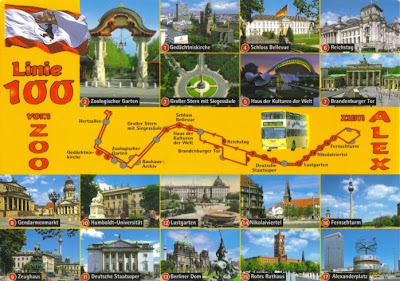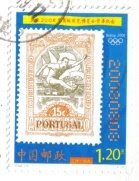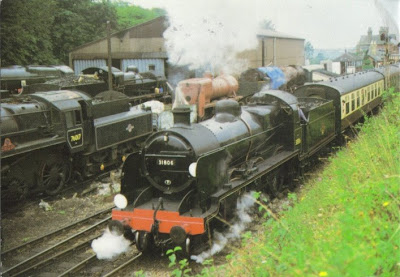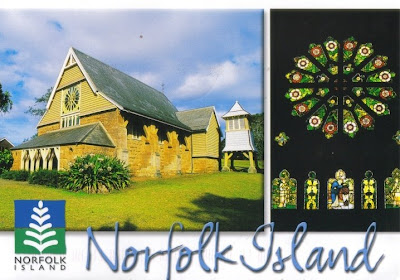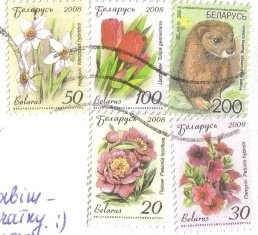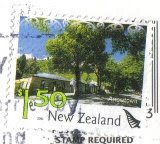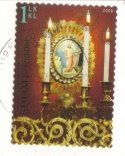I'm sorry for not updating my blog for over a week :) I think I'll have to (and I want to) update in daily now, because I've been receiving many wonderful cards, many of them coming from absolutely new countries in my collection, so I just feel like making very frequent updates :)
So what was the reason of my absence? :) Maybe you'll try to guess? ;) ... OK, I know it's not a very hard task, because I'm really crazy about one certain country and I go there each time I have at least 4 days off (less than 4 would be not enough, because I live about 520 kms away from the border and I always go there by train). The Easter holidays in Poland last for 6 days, so I decided to go to Ukraine :) But this time I have a serious reason to justify myself - as I'm planning to study in Kyiv since September (I still can't believe I can do it, although I've been told at the university that I had great chances, just because I can speak fluent Ukrainian) so I had to go there.
I spent just one day in Kyiv this time, but I enjoyed this time very much and spent it as well as I could thanks to Katya, who is my new friend :) I received
an official card from her in March and then we started corresponding and talking on Skype. I was very happy and thankful, when Katya offered to help me to find the right university building in Kyiv and to show me some interesting places in the city that I haven't seen yet. Here's one of the cards that I've received from Katya :) It shows the St. Sophia Cathedral in Kyiv, which is a UNESCO site.
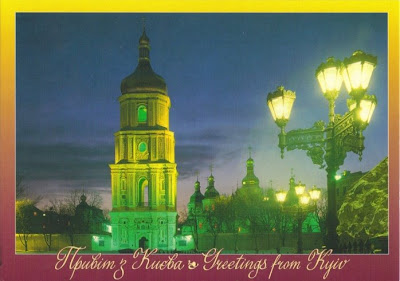
Saint Sophia Cathedral in Kyiv (Ukrainian: Собор Святої Софії, Sobor Sviatoyi Sofiyi or Софійський собор) is an outstanding architectural monument of Kievan Rus'. Today, it is one of the city's best known landmarks and the first Ukrainian patrimony to be inscribed on the World Heritage List. The first foundations were laid in 1037, but the cathedral took two decades to complete. The structure has 5 naves, 5 apses, and (quite surprisingly for Byzantine architecture) 13 cupolas. It is surrounded by two-tier galleries from three sides. Measuring 37 by 55 meters, the exterior used to be faced with plinths. On the inside, it retains mosaics and frescos from the eleventh century, including a dilapidated representation of Yaroslav's family, and the Virgin Orans.Finding the office for foreign students at the university was not so easy, as it might seem to be, because they had moved just a week before I came to Kyiv and first nobody wanted to tell us, where should we go... But then I went a bit angry ;) and I said that I travelled 1000 kms and that it was very important for me, so I finally got the right address :) I learned that I should come to Kyiv on 28th of August... It means that I'm going to have a really long summer (more than 3 months), but of course I'll be worried until they accept me there. I've been living in a big city since I was born, but Kyiv is just enormous for me (there are 3,5 mln inbitants in Kyiv, so it's twice bigger than Warsaw, the capital and largest city of Poland). Now I feel I could get lost there very easily, but I'm sure I'll get used to living there if I have such opportunity.
By the way, my new avatar is a photo taken next to the main post office of Kyiv on the Independence Square :))
Spending last Friday in Kyiv convinced me that postcrossing is not only a great project which lets you receive wonderful cards from around the world, but it also helps to meet very nice people and to make friends :) For me that was the first time to meet someone that I know from postcrossing in so called "real life" and that was a great experience :)
Катя, я не знаю, чи ти заглядаєш на мій блоґ, але якщо ти це читаєш - я хочу ще раз подякувати тобі за твою допомогу та за чудово проведений час у Києві :) Сподіваюся, що у нас ще буде нагода повторити це, можливо не лише у Києві та не лише в Україні ;) Мені справді дуже пощастило, що я познайомилась з тобою :) ДЯКУЮ! :)










